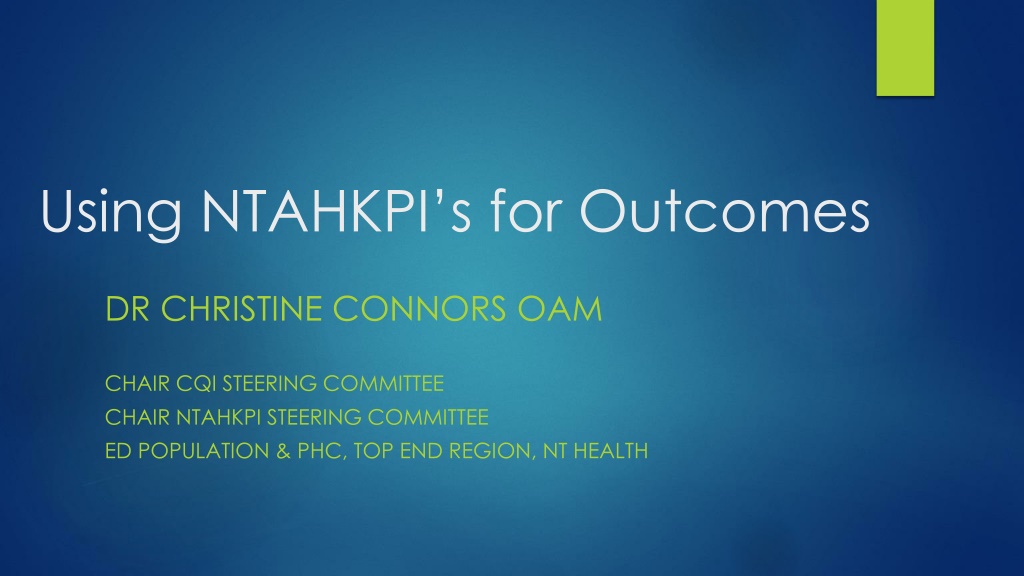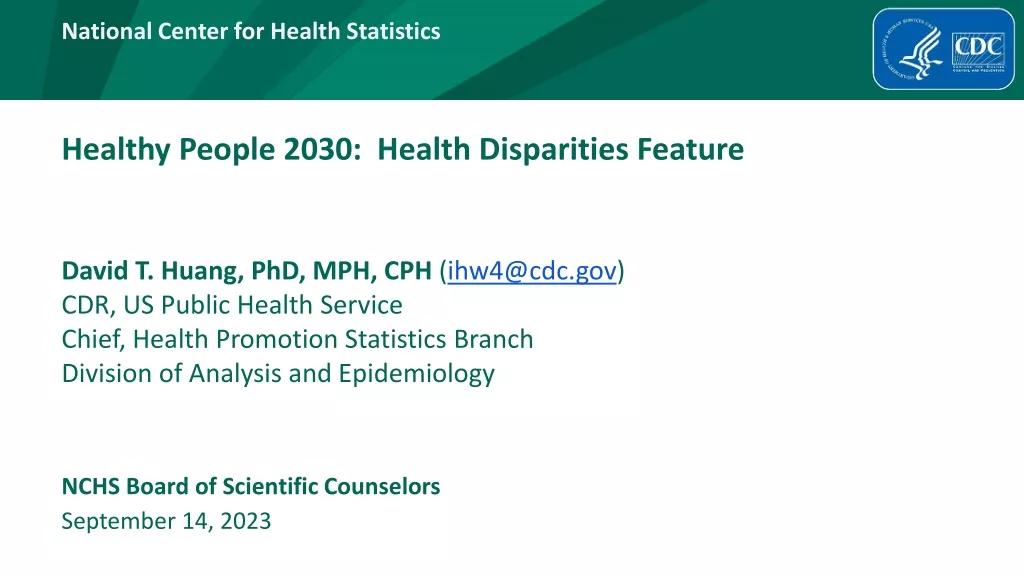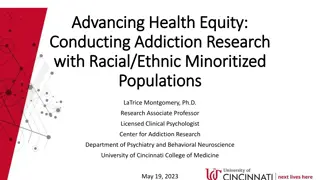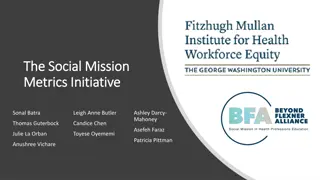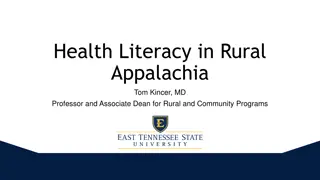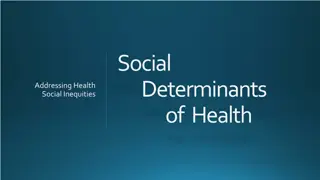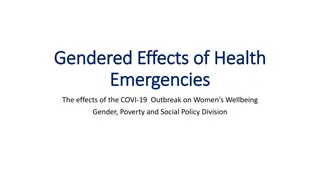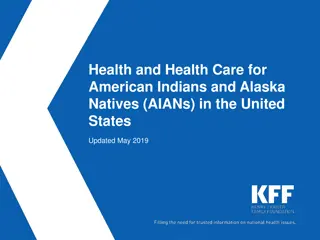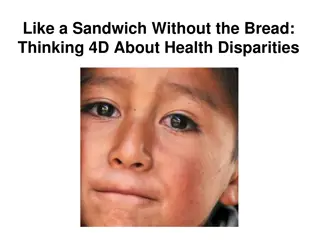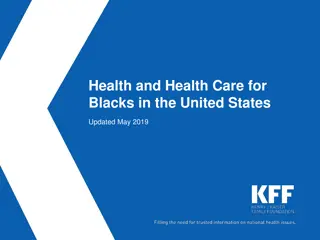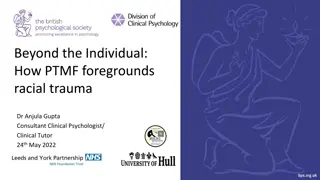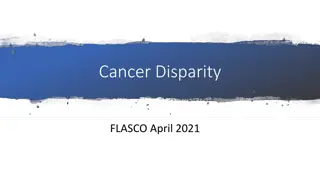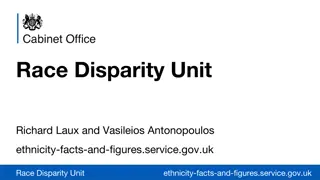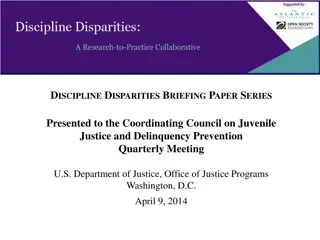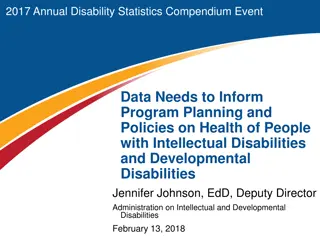Using NTAHKPIs for Outcomes in Improving Health Disparities
Life expectancy improvements and main contributors among Aboriginal populations in the Northern Territory, along with diabetes prevalence trends and factors affecting glycemic control. Insights from studies highlight the progress made and challenges faced in achieving better health outcomes for Indigenous communities.
Download Presentation

Please find below an Image/Link to download the presentation.
The content on the website is provided AS IS for your information and personal use only. It may not be sold, licensed, or shared on other websites without obtaining consent from the author.If you encounter any issues during the download, it is possible that the publisher has removed the file from their server.
You are allowed to download the files provided on this website for personal or commercial use, subject to the condition that they are used lawfully. All files are the property of their respective owners.
The content on the website is provided AS IS for your information and personal use only. It may not be sold, licensed, or shared on other websites without obtaining consent from the author.
E N D
Presentation Transcript
Using NTAHKPIs for Outcomes DR CHRISTINE CONNORS OAM CHAIR CQI STEERING COMMITTEE CHAIR NTAHKPI STEERING COMMITTEE ED POPULATION & PHC, TOP END REGION, NT HEALTH
Life Expectancy 1999-2018 Territorians Improvement LE - Aboriginal men 9.0 years - NA men 3.6 years - Aboriginal women 4.9 years - NA women 0.8 years 90 80 70 Closing the Gap Difference in LE Aboriginal men: 20.8 to 15.4 years - 5.4 years - 26% reduction in Gap 60 50 40 30 20 Aboriginal women : 19.5 to 15.4 - 4.1 years - 21% reduction in Gap 10 0 Aboriginal men NA men Aboriginal women NA women 1999 2018 Column1
Main contributors to improved LE Aboriginal men Cancer 23% Unintentional injury 18% Cardiovascular disease 17% Aboriginal women Cancer 24% Intentional injuries 17% Kidney disease 14% Improved Life Expectancy for Indigenous and Non Indigenous people in the Northern Territory 1999-2018. Zhao Y, Li SQ, Wilson T, Burgess CP. MJA. May 2022
Diabetes prevalence NT 2012/13: - 14.7% Aboriginal people had DM 2018/19: - 17.0% Aboriginal people had DM 18% increase over 7 years 2018/19 Adults>20 years - 28.6% diagnosed T2DM NT - 39.5% CA - 24.2% TE - 60% women - 68% live in TE - 99.6% had T2DM Prevalence and incidence of diabetes among Aboriginal people in remote communities of NT BMJ Open 2022 Hare MJL, Zhao Y, Guthridge S et al
Testing in each year has declined from 89% to 78% of people with diagnosed T2DM
Tight glycemic control (<7%) reduced from 37% to 30% in late 2020 and has improved to 34% Poor glycemic control (>10%) increased from 25% to 30% in late 2020 and has improved to 26% in 2021 Worse in young people < 25 years
What might impact glycemic control Late 2020 we saw significant declines in Episodes of Care and glycemic control across all sectors and regions 2021 : improvements across NT, although greater in certain areas Medication access depends upon PHC centre access Pandemic anxiety, screening processes, staff shortages
CQI Opportunities Continuity of care Allocate Aboriginal staff member to reduce impact of nursing/ doctor turnover Telehealth doctor/ diabetes educator reviews Health Coaching Aboriginal peer support KWHB, RLHS, NT Health : collaborative project Active review and follow-up of people not presenting Keep people connected to care Medication dispensing process Varies between 1 week to 1 month Consider how to maximise medication possession Food security, sleep, physical activity: people in prison achieve high levels of glycemic control (50%< 7% HbA1c DCC)
Summary T2DM is a major burden & challenge for individuals, families & communities Significant and increasing workload for PHC centres Staying focused and using your local data can direct your best efforts to achieve significant change Review and consider your medication dispensing Recognise that people can achieve better outcomes if SDOH were improved (you are working with people with greatest disadvantage) LE improvements over last 20 years shows importance and impact of PHC services and what you have achieved
